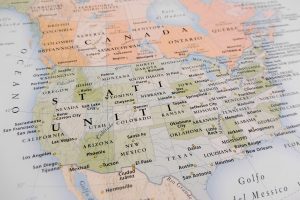Yes, you read that right. Last Friday, the IRS issued IR 2023-33 that extended the date to file individual and business tax returns and pay all amounts due for taxpayers living or operating businesses in certain California counties that have been declared disaster-areas. The deadline had already extended to May 15, 2023. Now it’s October 16, 2023. On Thursday, the California Governor and FTB conformed to the October 16th filing and payment deadline for California residents and businesses. It seems that nonresident individual taxpayers are not eligible for the extension, even those that have businesses located in California.
Before you decide to kick your procrastination tendencies into overdrive, you need to make sure that you qualify for the extension, know what payments are deferred, and reconsider the temptation to get us your information one week before October 16th.
Who Qualifies for the October 16th Extension?
- Individual taxpayers living in California counties that were impacted by the storms and flooding in December and January. These include all Southern California counties except for Imperial and Kern. All major Northern California counties are included. Do you personally need to have suffered flood or storm damage? No. You are deemed to be impacted just by living in the county.
- Individual taxpayers owning a business located in a storm-affected county. Nonresident individuals qualify for the federal extension, but don’t seem to qualify for California.
- Business taxpayers that operate in a qualified county. Multi-state businesses qualify for federal and California relief, but other states may not recognize the federal extension.
- Individuals and businesses whose records necessary to meet a deadline are located in a qualified county. Translation: If your CPA is located in an affected county, you can contact the IRS to let them know. You will also qualify. If LSL prepares your individual or business return, you will qualify for federal relief since we are located in Orange County. This exception does not seem to apply to California filings and payments and also can’t be used to qualify a nonresident individual.
What Payments and Filings Are Deferred Until October 16th?
-
Individuals
- Your 4th Quarter 2022 estimated tax payments that were due January 16, 2023.
- Your 2022 individual income tax return and any amounts due with the return.
- 2023 1st, 2nd, and 3rd quarter estimates (originally due April 18, June 15, and September 15)
- IRA contributions.
- Estate tax returns and payments due between January 7th and October 16th.
-
Businesses
- Filing and payments due with your 2021 and 2022 business income tax returns due after January 7, 2023 and before October 16, 2023.
- Estimated tax payments due from January 8, 2023 through September 15, 2023.
- California AB150/passthrough entity elective payments due March 15th (2022 amount due) and June 15th (2023 mandatory opt-in payment).
- Qualified plan contributions.
- Payroll tax returns due prior to October 16th, but NOT employment and excise tax deposits.
Why Shouldn’t I Wait Until October to Get My Taxes Prepared?
-
- Cash Flow. First off, you may be getting a refund. Why give the government an interest free loan through October 16th? You can file returns with a refund first and wait to file returns with amounts due. You should be able to file the returns with an amount due now and wait to pay until October 16, but you may have to deal with erroneous penalty notices. We will have to wait and see. Also, if most tax payments you owe in 2023 come due October 16th, you very likely will have a major cash crunch. You will need to budget for that payment, set aside cash into secure investments, and be ready to write a big check. In order to know the nut you need to crack, you will need your returns substantially complete well before the October 16th deadline. Get your information to us as soon as possible so we can properly advise you on your anticipated payments.
- Multi-State Returns. Just because the IRS and California gave you this extension doesn’t mean you’re off the hook with other states. They want their money on their filing deadlines. So, we still need your information as soon as possible to sufficiently calculate any amounts due to those states. We will most likely file electronic extensions for our clients on the March 15th and April 18th due dates. If you have amounts due with your out-of-state returns, we will have you pay them with the extensions. The filing of extensions is not required by the IRS or California but will provide a fallback position for the out-of-state returns, hopefully prevent unwanted IRS notices in case their system fails again, and prevent late filing penalties if any filings are subsequently deemed not to qualify for the October 16th filing date relief.
- Pass-Through Entity Filings. Partnerships, S-Corporations and fiduciary income tax return filings are also extended through October 16th. One big problem with this: the K-1s that flow to partners, shareholders and beneficiaries will be needed in order to file the individual income tax returns which are also due October 16th. The sooner the pass-through entity returns are completed the better in order to give sufficient time to prepare the individual income tax returns. This is important to facilitate cash flow planning, help out your fellow partners or shareholders with their returns and stop getting the question “is my K-1 done yet?” every other day for months.
In summary, this is very good news because it takes the pressure off the tax season grind – for both you and LSL. But it opens up a whole new can of worms. Please get us your information as soon as you can so we can help you navigate the cash flow and filing landmines that these extensions have created.
Questions regarding your unique situation? Please contact your partner or manager directly. We’re here to help.






